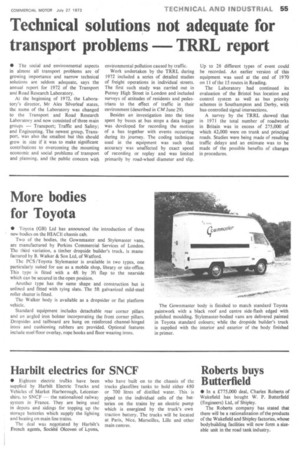Technical solutions not adequate for transport problems TRRL report
Page 57

If you've noticed an error in this article please click here to report it so we can fix it.
• The social and environmental aspects in almost all transport problems are of growing importance and narrow technical solutions are seldom adequate, says the annual report for 1972 of the Transport and Road Research Laboratory.
At the beginning of 1972, the Laboratory's director, Mr Alex Silverleaf states, thc name of the Laboratory was changed to the Transport and Road Research Laboratory and now consisted of three main groups — Transport; Traffic and Safety; and Engineering. The newest group, Transport, was also the smallest but this should grow in size if it was to make significant contributions to overcoming the mounting economic and social problems of transport and planning, and the public concern with environmental pollution caused by traffic.
Work undertaken by the TRRL during 1972 included a series of detailed studies of freight operations in individual streets. The first such study was carried out in Putney High Street in London and included surveys of attitudes of residents and pedestrians to the effect of traffic in their environment (described in CM June 29).
Besides an investigation into the time spent by buses at bus stops a data logger was developed for recording the motion of a bus together with events occurring during its journey. The coding technique used in the equipment was such that accuracy was unaffected by exact speed of recording or replay and was limited primarily by road-wheel diameter and slip. Up to 28 different types of event could be recorded. An earlier version of this equipment was used at the end of 1970 on 11 of the 15 routes in Reading.
The Laboratory had continued its evaluation of the Bristol bus location and control system as well as bus priority schemes in Southampton and Derby, with bus-controlled signal intersections.
A survey by the TRRL showed that in 1971 the total number of roadworks in Britain was in excess of 275,000 of which 42,000 were on trunk and principal roads. Studies were being made of resulting traffic delays and an estimate was to be made of the possible benefits of changes in procedures.
























































































































































